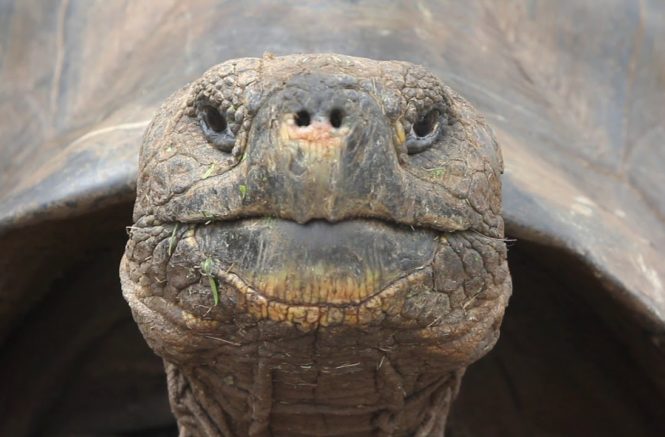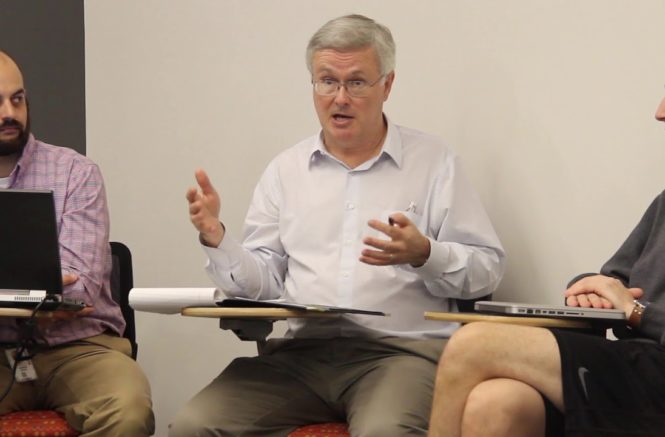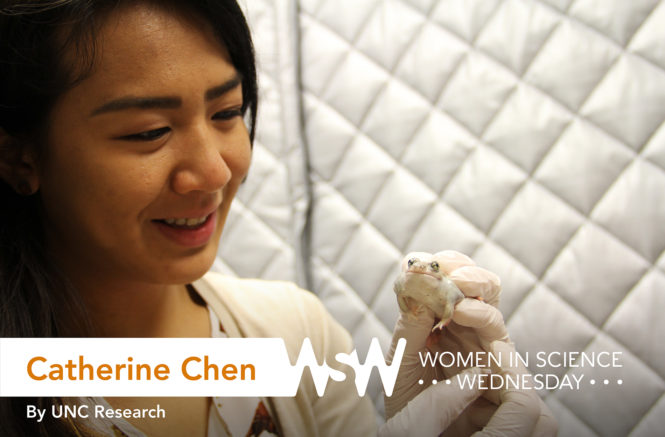The One Doing the Talking
Across the nation, data indicate that meaningful conversations between teachers and students from kindergarten to third grade are limited to an average of 28 total minutes per day — something that prevents children from developing their ability to communicate in important ways. The Frank Porter Graham Child Development Institute’s FirstSchool initiative strives to change that.
The Evolution of a Research Center
More than 225 students and scientists have received educational training and advanced their research at the Galapágos Science Center — a collaborative partnership between UNC-Chapel Hill and the Universidad San Francisco de Quito.
Ariana Rivens
Senior Ariana Rivens is an undergraduate researcher within the UNC College of Arts & Sciences majoring in psychology and neuroscience, with minors in social and economic justice and history. She is also a McNair Scholar. Her research focuses on the risk and resiliency of marginalized racial and ethnic populations as they react to and cope with stress.
Brotherhood of Hope
In October 2010, seven men embarked on a rare and unexpected journey — they joined a support group for widowed fathers. The experience was so instrumental in their healing that the group’s organizers, UNC researchers Don Rosenstein and Justin Yopp, wrote a book about it called, “The Group: Seven Widowed Fathers Reimagine Life.”
Abby Gancz
Junior Abby Gancz is an undergraduate researcher studying biostatistics within the UNC Gillings School of Global Public Health and anthropology within the UNC College of Arts & Sciences. Within the Research Laboratories of Archaeology, she focuses on integrating new digitization and modeling technologies into archaeology and understanding how researchers and educational institutions can utilize them.
Johna Register-Mihalik
Johna Register-Mihalik is an assistant professor in the Department of Exercise and Sport Science within the UNC College of Arts & Sciences. She is also a research scientist at the UNC Injury Prevention Research Center. Her research focuses on the prevention, education, consequences, and clinical management of recreation- and sport-related traumatic brain injury.
Making Scientists
Thanks to an industry partnership with Eastman and the Eastman Foundation, UNC’s BeAM makerspace program provides the resources for free 3-D printing to all students, faculty, and staff — encouraging a culture of creativity at Carolina.
Catherine Chen
Catherine Chen is a PhD student in the Department of Biology within the UNC College of Arts and Sciences and a member of the Karin Pfennig Lab. Her research focuses on how visual and auditory signals affect the mating decisions of female spadefoot toads.
Speaking Math
Imagine a sentence so long that it would take an entire lifetime to read it — that’s the kind of problem Joaquín Drut faces every day. The UNC physicist works with numbers too large to compute in an effort to better understand the way our universe works.
Career Aquatic
At the end of his 40-year career at the UNC Institute of Marine Sciences, Dive Safety Officer Glenn Safrit reflects on the most important lessons he learned — and taught — in the ocean.
Generating Power Like Plants
When plants absorb sunlight, they convert carbon dioxide into energy-rich organic compounds. What if humans could do the same thing? What if we could pull CO2 out of the air and use it to build organic molecules? This revolutionary idea is still just that — an idea. But organic chemists at UNC are laying the groundwork for turning it into reality.
Katrina Morgan
Katrina Morgan is a fourth-year PhD candidate studying mathematics within the UNC College of Arts & Sciences. Her research is motivated by General Relativity, which says our universe bends near massive bodies like planets or black holes and becomes flat away from them. She examines how light waves decay on a variety of spacetimes that are curved, but become flat far away in space.















